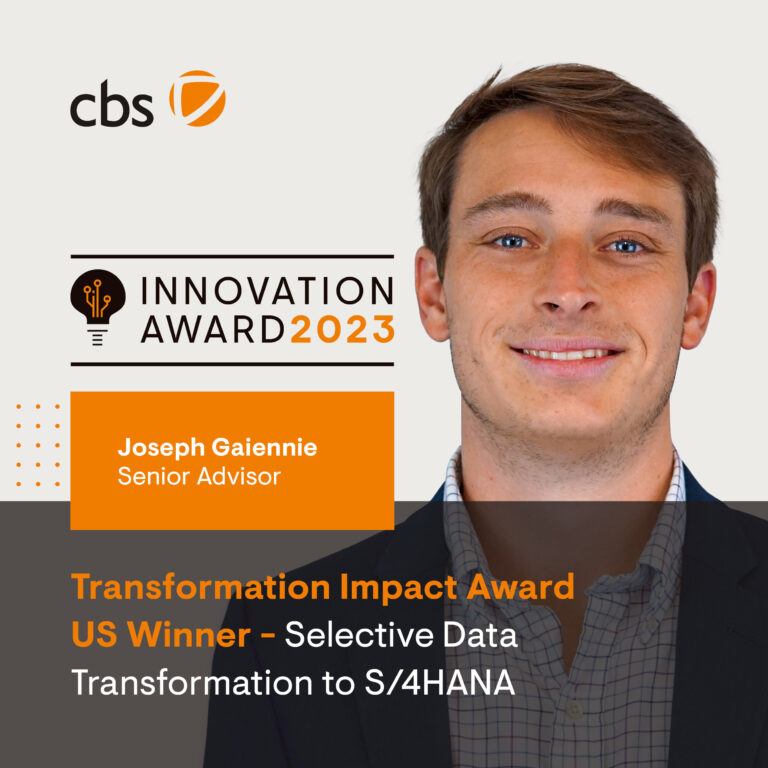The SAP Green Ledger promises to make carbon accounting transparently achievable in the future. By transferring the principles of finance to the area of emissions data, it offers a holistic overview of a company’s carbon footprint and effective control options. If enterprises wish to take advantage of these benefits for their sustainability efforts, they must prepare proactively.
Emissions data is essential for making informed decisions in the context of decarbonization. However, this data is complex and comes from a wide variety of sources, including external sources. In addition, CO2 data can often only be collected selectively and then aggregated and reported at longer intervals. This means that there is a period of weeks to months between measures and the reported results. This is too slow in view of the upcoming regulations and dynamically changing customer requirements in the B2B sector.
The SAP Green Ledger is designed to enable companies to react to developments in a timely and agile manner. The term “ledger” refers to the various accounting ledgers that are used to map local accounting regulations. The Green Ledger will take into account environmental aspects such as CO2e (equivalents) or other greenhouse gases in addition to existing currency values. The core idea is therefore to record emissions data in the accounts and link it to financial data.

The Green Ledger enables “transactional carbon accounting”, i.e. the emissions generated by products and services of companies in the global value chain can be measured, tracked and reported on a transactional basis. In this way, companies can move from isolated, isolated representations of emissions to a well-founded end-to-end view.
Especially for the manufacturing industry, the Green Ledger is of particular importance. For these industries, it is essential to immediately identify the biggest influencing factors and most important levers in their value chain and to respond effectively. In addition, the legal requirements for reporting emissions are moving towards a more detailed presentation, away from aggregated information. Companies must be able to document their emissions values transparently, especially in the context of their products, and provide real, verifiable values. Improving the quality of reporting regarding legal requirements also enables companies to position themselves in a competitive environment by being able to credibly label their products as environmentally friendly and “green”.
The Green Ledger architecture
SAP Sustainability Footprint Management (SFM) is of central importance in the Green Ledger System architecture. This calculates the carbon footprint at company and product level along the scopes and automates and optimizes data collection. SFM also assigns emissions data to the transaction and master data records of the ERP system.
With regard to Scope 3 emissions, data from suppliers outside the company’s own organization is required. Their use is simplified by the SAP Sustainability Data Exchange, which is currently under development and offers a network for suppliers and customers for automated data exchange.
Ideally, SAP Datasphere is connected to the Green Ledger as a data warehouse. This can be used to integrate additional data sources and non-SAP systems. The Datasphere harmonizes the data at a uniform level, regardless of its origin.
In the future, the Green Ledger will act as a hub within the architecture, in which the data flows from the financial accounting system and the ESG solutions will be merged in the SAP S/4HANA ERP system. The data from the sustainability solutions will be assigned to profit centers, cost centers, company codes, etc. Financial and emissions data are therefore in the same place.
Finally, the SAP Sustainability Control Tower (SCT) enables holistic management and reporting by centralizing and structuring other ESG data in addition to emissions data. The SAP Analytics Cloud can also provide visualizations and dashboards as well as predictive planning and simulation scenarios.
How companies should prepare
The Green Ledger is still under development and is expected for RISE and GROW customers in the second half of 2024. Companies interested in introducing it should set the course now. The implementation of the Green Ledger requires a complete conversion to SAP S/4HANA and the introduction of the SAP Business Technology Platform as a fundamental prerequisite. In addition, a clean setup of the areas involved is of great importance and must be addressed in advance, as must data quality – the quality of the input determines the quality of the output. It is therefore also advisable to implement SAP Datasphere and the Analytics Cloud.
It only makes sense to introduce the various sustainability solutions, such as SAP Sustainability Footprint Management, the Sustainability Control Tower and finally the Green Ledger, once these requirements have been met.
However, it is important to emphasize that this course of action is only a rough outline, as there is no universally valid approach to sustainability IT strategy for every company. It is crucial to align the sustainability strategy with the IT strategy and to derive a clear roadmap from this – and to embark on this path at an early stage. Time is of the essence in many respects. cbs can support you in reviewing your roadmap towards sustainable business. Contact us – together we will find the right solutions.
Authors




